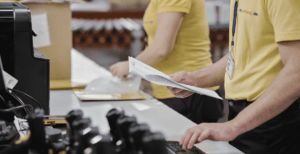The lifeline of any successful product lies in the understanding of the people who use it. In the fiercely competitive landscape of product design, those that stand out are often the ones that are thoroughly grounded in real user needs. Here’s where user research emerges not just as a helpful element in product development but as its very backbone – an irreplaceable asset to achieving design success.
The Foundation of Product Design: User-Centeredness
User research is foundational to product design because it shifts the focus from what the business thinks the user needs to what the user actually needs. By observing, engaging, and empathizing with the user, the design process transcends aesthetics and becomes an embodiment of functional value. Understanding users allows the design to be purpose-driven, ensuring that the final product serves real-world demands.
Frank Chimero, a renowned designer and author, best summarizes the essence of user-centered design: “People ignore design that ignores people.” The philosophy here is clear—ignoring the user’s voice is akin to building with a blindfold on. User-centered design is more than a mere buzzword; it’s a cornerstone philosophy for any successful product strategy.

Unearthing User Insights: The Methodologies and Techniques
To fuse empathy into design, a varied assortment of methodologies and techniques are employed. These range from in-depth interviews and focus groups to user testing, ethnographic studies, and persona development. Each method has its strengths, and when strategically interwoven, they create a rich tapestry of insights that guide and validate design decisions.
Nielsen Norman Group, pioneering the world of user experience research, emphasizes the utility of these techniques. They are not just tools but pathways to discover unmet user needs and validate design concepts. The goal is clarity; the design should be a mirror reflecting the user’s routines, quirks, and behaviors.
But it’s not solely about collecting data. Mere numbers and transcripts only have value when interpreted in context. An intuitive understanding of human behavior, alongside rigorous methodology, is where the magic of user research transmutes into actionable product design wisdom.
User Research Methodologies and Techniques;
Prototype testing:
Building prototypes allows designers to gather feedback and test different design solutions before fully developing a product, saving time and resources in the long run. Additionally, usability testing with prototypes can reveal user frustrations and areas for improvement early on in the design process.
In-depth interviews:
By building rapport with participants and delving into their behaviors, motivations, and goals, in-depth interviews provide rich qualitative data. Also known as one-on-one sessions, these are the starting point for understanding user needs and preferences.
Focus groups:
These group discussions bring together a diverse mix of users. The dialogue between members can often unearth new ideas or reveal potential issues.
Surveys and questionnaires:
These tools help gather quantitative data from a large number of participants quickly, providing valuable statistical insights.
A/B testing:
This method involves creating two versions of a design or feature and testing them with different groups of users to determine which performs better.
Diary studies:
By having users record their experiences and thoughts over a period of time, diary studies provide insights into long-term usage patterns and preferences.
Ethnographic studies:
By observing users in their natural environment, ethnographic studies provide insights into context and culture that are hard to gather through other methods.
Card sorting:
This technique is used to organize information in a way that makes sense to users, helping designers understand how people mentally categorize and label information.
Explore this article for insights on User Research Methodologies and Techniques.

Iterative Excellence: Designing with the User, not for Them
The iterative nature of user research allows for course correction. Design is not a linear path but a perpetual loop of learning, prototyping, and testing. This ongoing interaction with the user community hones the product, making it a living, breathing entity that evolves to better meet its purpose.
Here, we are not just designing a product; we are cultivating an experience. A beautifully designed app or a sleekly packaged good may catch the eye, but it’s the user experience that fosters loyalty. By designing for the user, we create not just products but advocates—individuals who feel seen and heard, whose interaction with their tools is a testament to the bond between customer and company.
Crafting a Competitive Edge: Design Informed by Desire
Businesses that invest in understanding their users craft a competitive edge. By speaking to what users truly desire and need, products outshine the competition. In the noisy marketplace, the products that resonate are those whose creators valued the user’s voice enough to listen and act upon it.
This investment is not just in research and design but in the relationship between the user and the product. It’s an investment in trust, which, once earned, yields dividends of brand advocacy and consumer satisfaction.

Start with the User, End with Success
In the end, user research is not an add-on but a starting point. By understanding the people who will ultimately use the product, design can be imbued with purpose and value. Every great product is, at its core, a reflection of those it serves. As a takeaway, remember that users aren’t just a part of the design process—they are the design process. Engaging with users ensures that the final product is not just good but great, impactful, and enduring.
To encapsulate the essence of user research in product design, remember this: in a world teeming with choices, users choose products that seem to have been designed with them in mind. User research guarantees that your product is one of those chosen few. If you want to consistently win in the ever-evolving game of product design, play it from the user’s corner. Because in the end, it’s not just the product that will thank you; it’s the people who use it.




